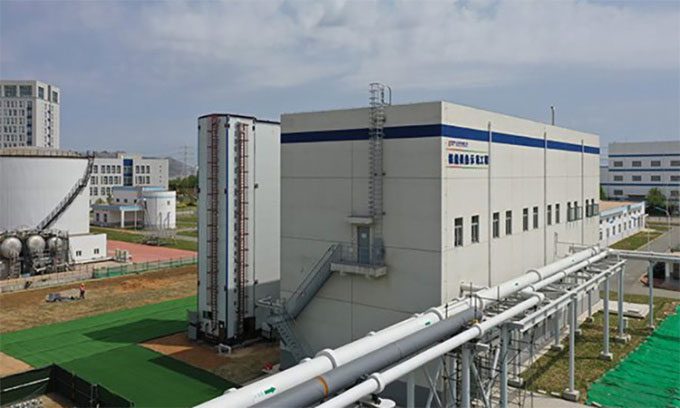The Haiyang Nuclear Heating Project has a capacity of 365 MW, serving an area of 5 million square meters and providing clean heat for over 200,000 people.
In recent years, China has been transitioning towards clean energy and implementing various measures to reduce greenhouse gas emissions. One of the most effective ways to achieve this goal is to limit coal heating – a common method for keeping warm during the winter in the country. Several provinces have initiated nuclear heating projects to reduce environmental pollution and ensure energy supply during colder temperatures.

Nuclear heating project in Haiyang City, Shandong Province, eastern China. (Photo: SPIC)
The Haiyang Nuclear Heating Project utilizes heat generated from nuclear energy and is warming China’s first carbon-free city, reported CGTN on November 20. According to the State Power Investment Corporation (SPIC), the new heating system became operational last week in Haiyang City, Shandong Province.
As the largest nuclear heating project in China, the Haiyang Nuclear Heating Project has a capacity of 365 MW, accounting for 92.8% of the country’s total nuclear heating capacity, serving an area of 5 million square meters and providing clean energy for over 200,000 residents. The testing process using steam from nuclear energy for winter heating in Haiyang began in 2019, involving 7,000 households.
Unit 1 of the Haiyang Nuclear Power Plant is the largest cogeneration unit (simultaneously producing electricity and other forms of energy, such as heat) in the world, according to Shandong Nuclear Power Company, a subsidiary of SPIC and the plant’s owner. It has replaced 12 coal-fired boilers and is expected to reduce emissions by 180,000 tons of CO2, 1,188 tons of SO2, and 1,123 tons of NO each heating season.
In the 14th Five-Year Plan (FYP) (2021-2025) for the energy system, China is calling for broader use of nuclear energy for heating residential areas, industrial zones, and desalinating seawater, contributing to cleaner air, reducing greenhouse gas emissions, and mitigating the negative impacts of climate change.
China previously relied on small, decentralized boilers primarily fueled by coal for winter heating, which had low thermal efficiency and wasted energy. As a form of green and clean heat, energy from nuclear power is playing a crucial role in reducing CO2 emissions and ensuring energy security.
In Haiyan District, Zhejiang Province, the first nuclear heating trial project in southern China is being developed, with a capacity of 15.6 MW. Upon completion at the end of the 14th FYP, the project will provide heat for an area of 4 million square meters, saving 24,600 tons of standard coal annually.
Meanwhile, the residential heating network of the Hongyanhe Nuclear Power Plant has officially become operational in Liaoning Province, with a capacity of 12.77 MW. The network is expected to reduce approximately 5,700 tons of coal consumption and 14,000 tons of CO2 emissions each year.





















































